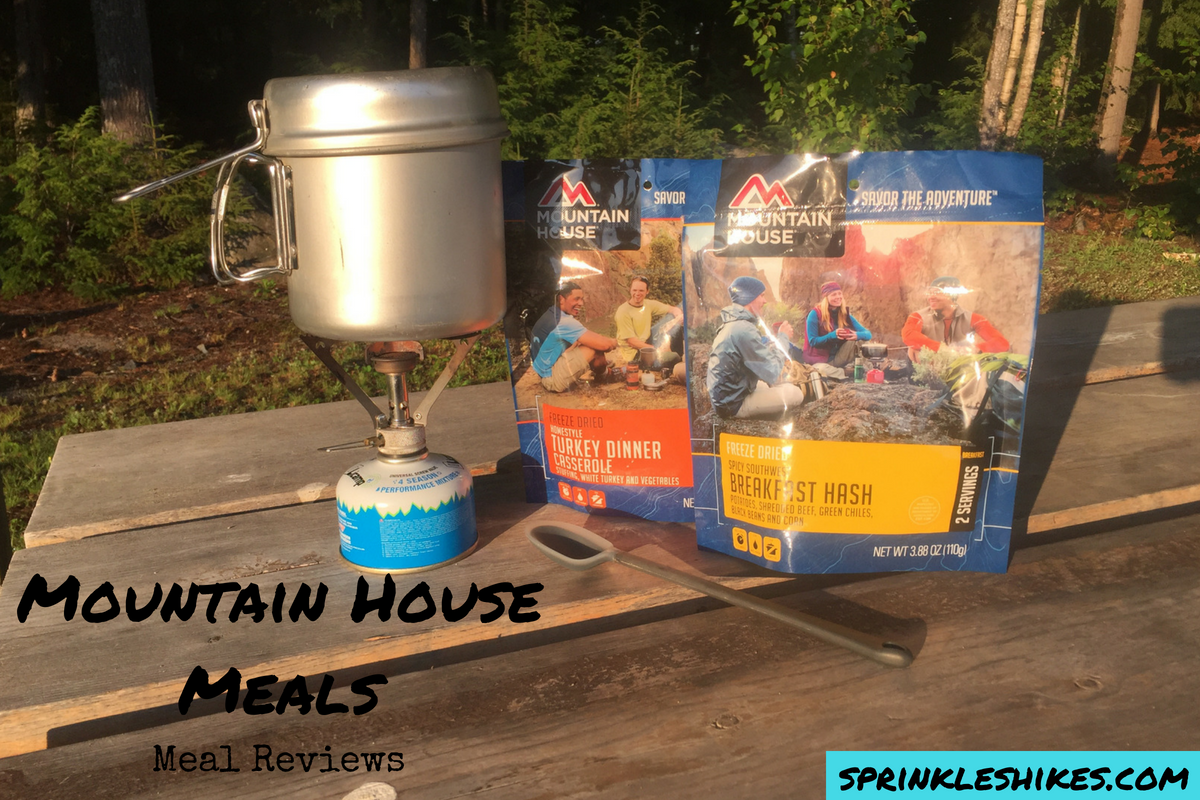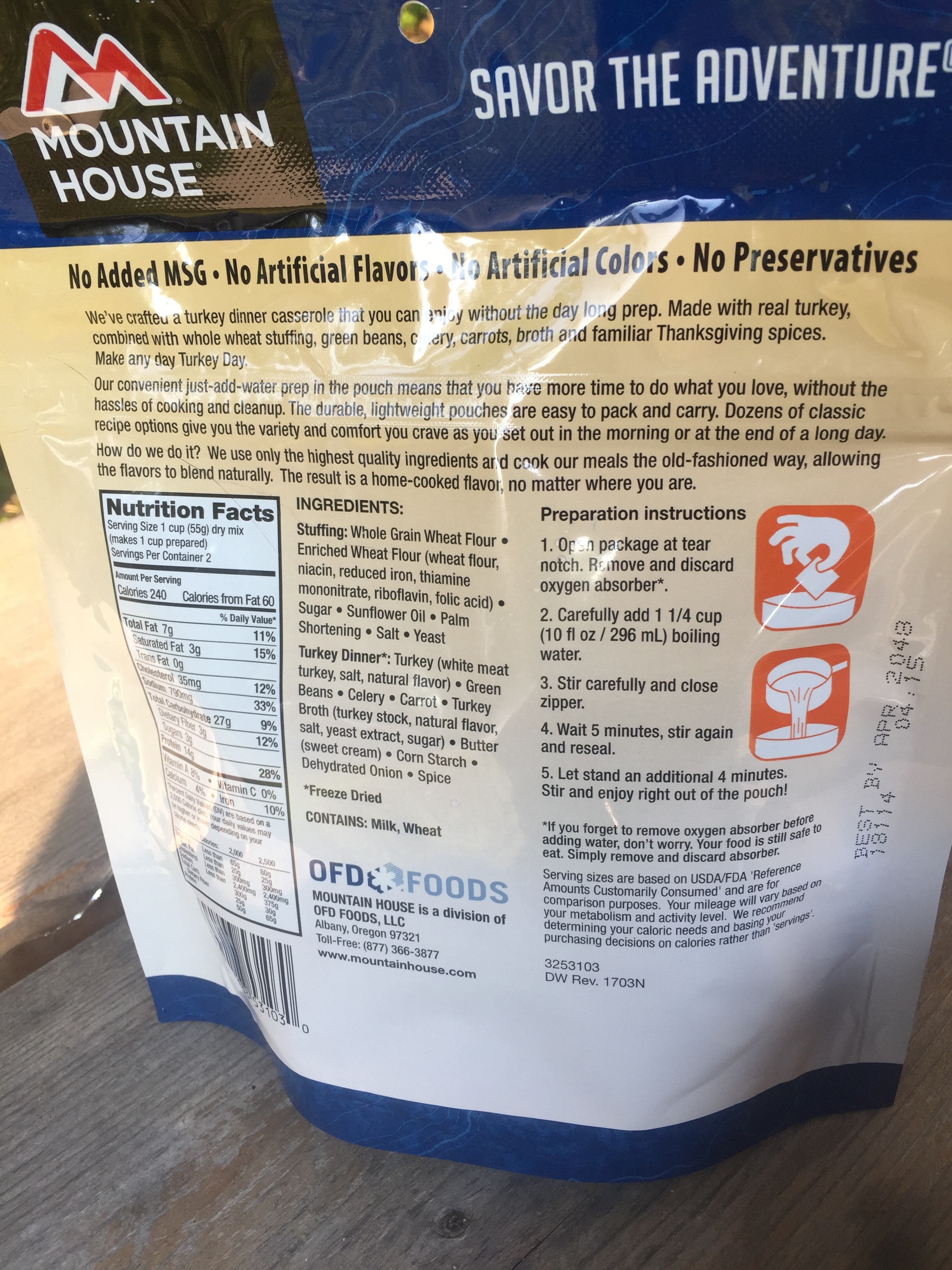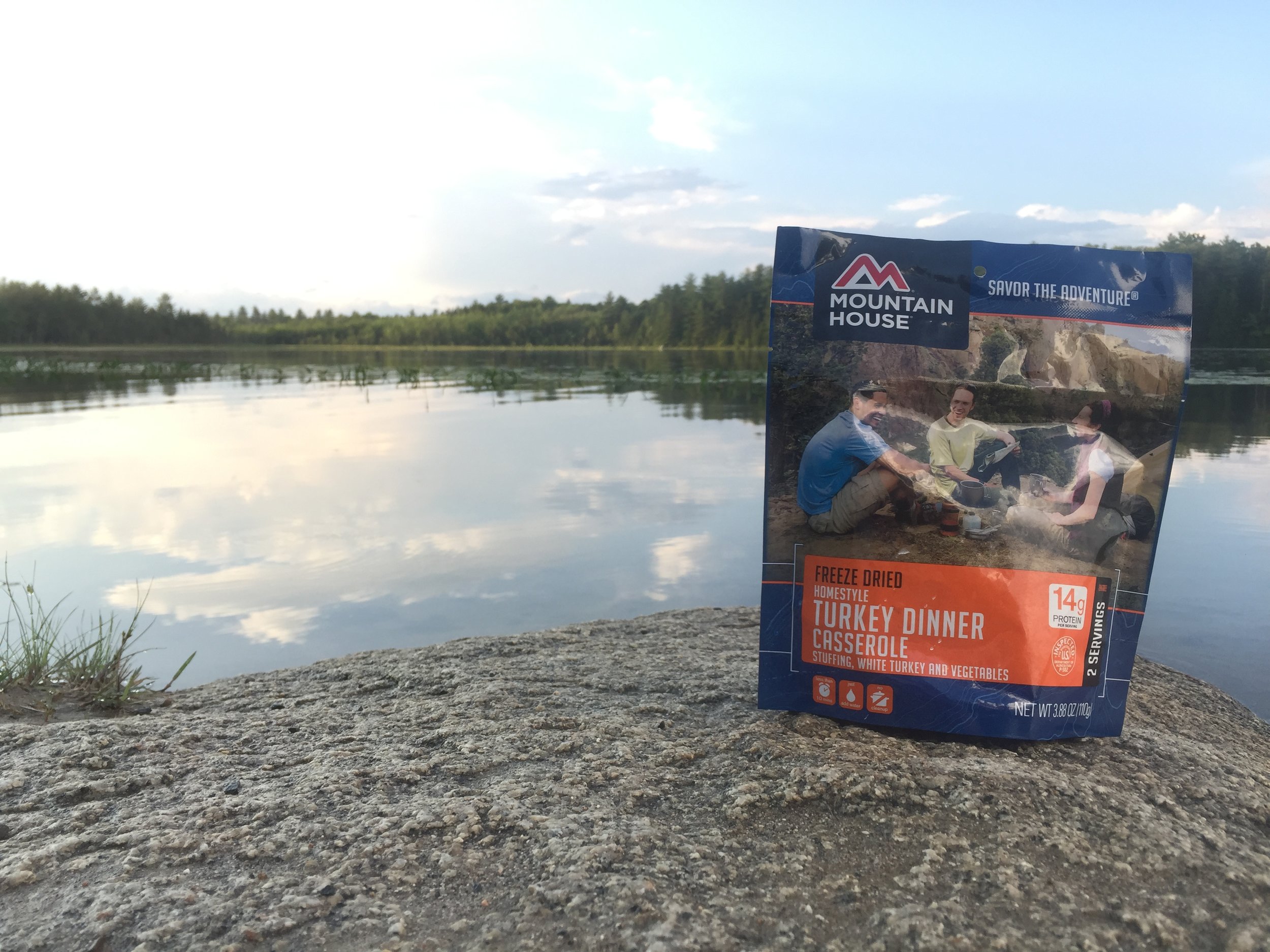Breakfast Ideas
Breakfast is a toughie because some people just don’t like breakfast. If I don’t eat breakfast I crash and burn fairly quickly. I also was never a coffee drinker until I hit the trail but once I really got into the routine, I found a warm cup of coffee was perfect for me most mornings. On hot summer mornings I often just made it with cold water for an "iced coffee"! If you don’t think you’d like coffee, any warm liquid is often nice in the morning to get everything in your digestive tract “moving.” Instead of hot chocolate, I really recommend Carnation Instant Breakfast packets. They have a coffee flavor and two different chocolate flavors, as well as vanilla and strawberry. There is at least SOME nutrition in this, as well as a LOT sugar to perk you up. My personal favorite for a breakfast drink is coffee with a pack of Carnation. It’s like a hiker trash mocha, haha!
-Two packets of instant oatmeal - two will at least give you calories. Interestingly enough if you look at a pack of instant oats you'll see something you probably never noticed before - a fill line. That's right, you can eat this stuff right out of the packs for easy clean up! Just be careful with super hot water. I often ate it cold on trail.
-Two packets of instant grits or cream of wheat
-ProBars (340 calories - whole food energy)
-Little Debbie Cakes (sugar energy)
-Honey Buns (iced honey buns have the most caloric bang for your buck, often packing in close to 600 calories for only a few ounces of weight)
-Pop tarts
-Bagels with shelf-stable cheese (Laughing Cow will last up to 5 days in a pack) or peanut butter, cookie butter, or Nutella
-Peanut butter and granola bars (Nature Valley type)
Lunch Ideas:
I am a fan of stopping for a proper lunch. I like to take breaks when I hike and I find a proper lunch break makes me feel better in the afternoon. Lunch ideas are often the same as breakfast with a few tweaks.
-Peanut butter and honey on a tortilla or the sandwich thin bread or bagels (I hate tortillas, so I opt for bread)
-Pepperoni/summer sausage and Laughing Cow Cheese (or regular cheese) on a bagel or bagel thin
-Pop tarts with peanut butter, eaten like a sandwich
-Tuna or salmon packets with tortillas or sandwich thins. I don't know if any of you have noticed, but they make so many flavors of tuna now and I even recently saw two different flavors of salmon! Spam packets also are popular for lunches.
Dinner Ideas:
Dinner ideas can be crazy versatile. There is really more food out there than you’d think, but if you don’t shop for processed food often it’s hard to figure this out. Sometimes you just have to be creative and do without things and be good at improvising. The only thing I recommend staying away from for trail dinners is quinoa - it takes 18 minutes to make and that’s active cooking time. Fuel canisters can only last 60-75 minutes, so it burns up a lot of fuel on your stove!
-Near East CousCous (There are a TON of flavors and its fast!)
-Ramen - you can add peanut butter and dried veggies for a “pad thai”
-Mac and Cheese - even without butter and milk powder this works well!
-Knorr pasta sides or rice sides - these generally cook in 8-10 minutes, but can be done in as few as five active with 10 extra for sitting and soaking
-Instant mashed potatoes - they come in several different flavors
-Stovetop stuffing - surprisingly filling for a dinner or you can mix them with potatoes
-El Paso Ready Rice - there are tons of precooked rice packs out there in lots of flavors. Unfortunately, these are heavy, but are great for a first day out of town
-Asia Kitchen makes Chinese food that is much like the ready rice - just heat for a few minutes and serve
-Taste of India makes Indian dishes that are heat and serve (and these make other hikers REALLY jealous when they smell them!)
Snacks:
I usually eat three meals a day and two snacks when I am hiking. I have breakfast around 7:30 a.m., a snack at 10 a.m., lunch around 12-1 p.m., a snack around 4 p.m., and dinner at camp. This is my magic recipe for not feeling “hangry” during the day!
-Nature Valley Granola Bars, Clif Bars, Kind Bars - any kind of bar really! I would AVOID anything labeled as a protein bar or body builder bar. These bars have sugar alcohols as an ingredient and sugar alcohols are notorious for making you need to poop VERY badly. I made this mistake a few times on trail and it’s HORRIFYING.
-Goldfish Crackers, Cheeze Its, Triscuits - most crackers like this hold up for a few days pretty well
-Fruit snacks
-Trail mix - can be heavy as most bags are an entire pound, but if you make a good dent in it each day it should be okay
-Cheesy Popcorn - holds up surprisingly well in a gallon sized freezer bag and is a personal favorite of mine
and of course, CANDY! The mini candy bars are what I always went for. The packs of 8-10 are the best because it’s just enough of a snack, plus you can usually eat two per day. Sometimes I would have one with lunch and one with dinner as a dessert.
I should also note that for people who don't often eat a lot of processed food products, it can be really hard on your stomach and body to immediately begin consuming large amounts of this stuff. For me, by the time I got to Hot Springs, I constantly felt kind of queasy. I picked up a package of Flintstones Chewable kids vitamins and took two of them every night before I brushed my teeth and they really helped me feel better. Several others who noticed me doing this also reported good results. Since then, they've come out with adult gummy multivitamins and NoKey does really well chewing those up every night. I personally cannot take regular adult multivitamins because I get stomachaches from the iron content. So, in short, if you start feeling run down and crappy fairly early on, consider adding a multivitamin to your diet!
And yes, I know I may have forgotten (insert whatever it is you think I forgot here). There are so many different food choices out there and so many different dietary needs. Some people prefer to not even carry a backpacking stove, so this article doesn't even begin to touch on all of those things! I'm just covering the bases for any new or wanna-be hikers who are looking for ideas that are cheaper than Mountain House type meals and will be cooking.
Well, there you have it! A quick and dirty list of foods I commonly see on the trail that long-distance hikers are eating. Are you horrified at what thru hikers consume?! What do you normally eat on the trail? Are there any foods you love or foods that you can't even bear to look at after eating them so often on a hike? I'd love to hear your favorites! Leave me a comment below or find me on Facebook or Twitter to get the conversation started!







































